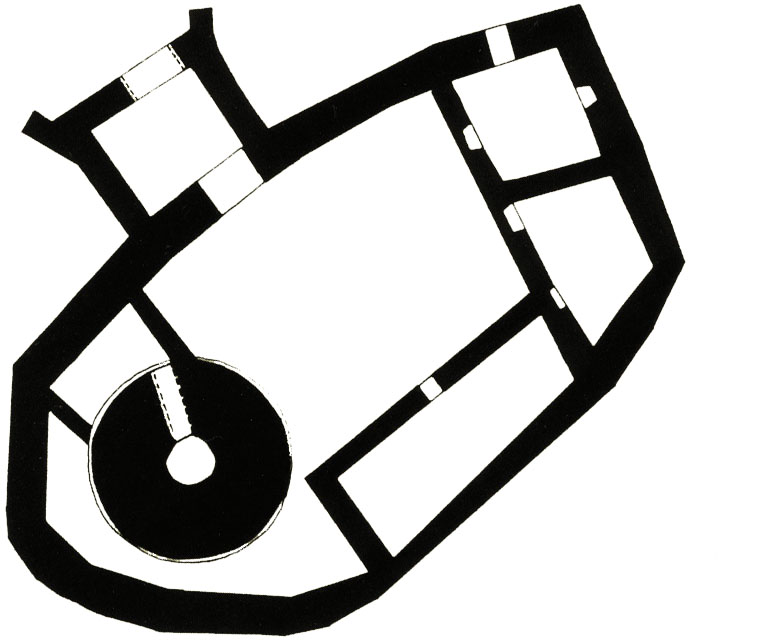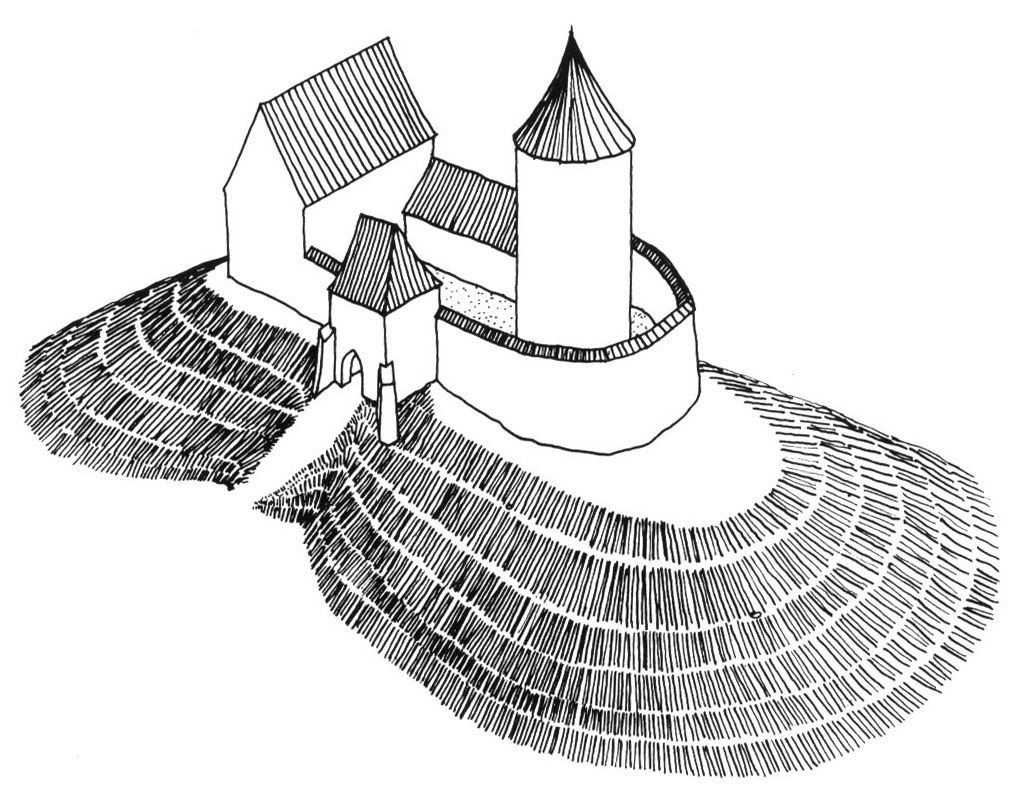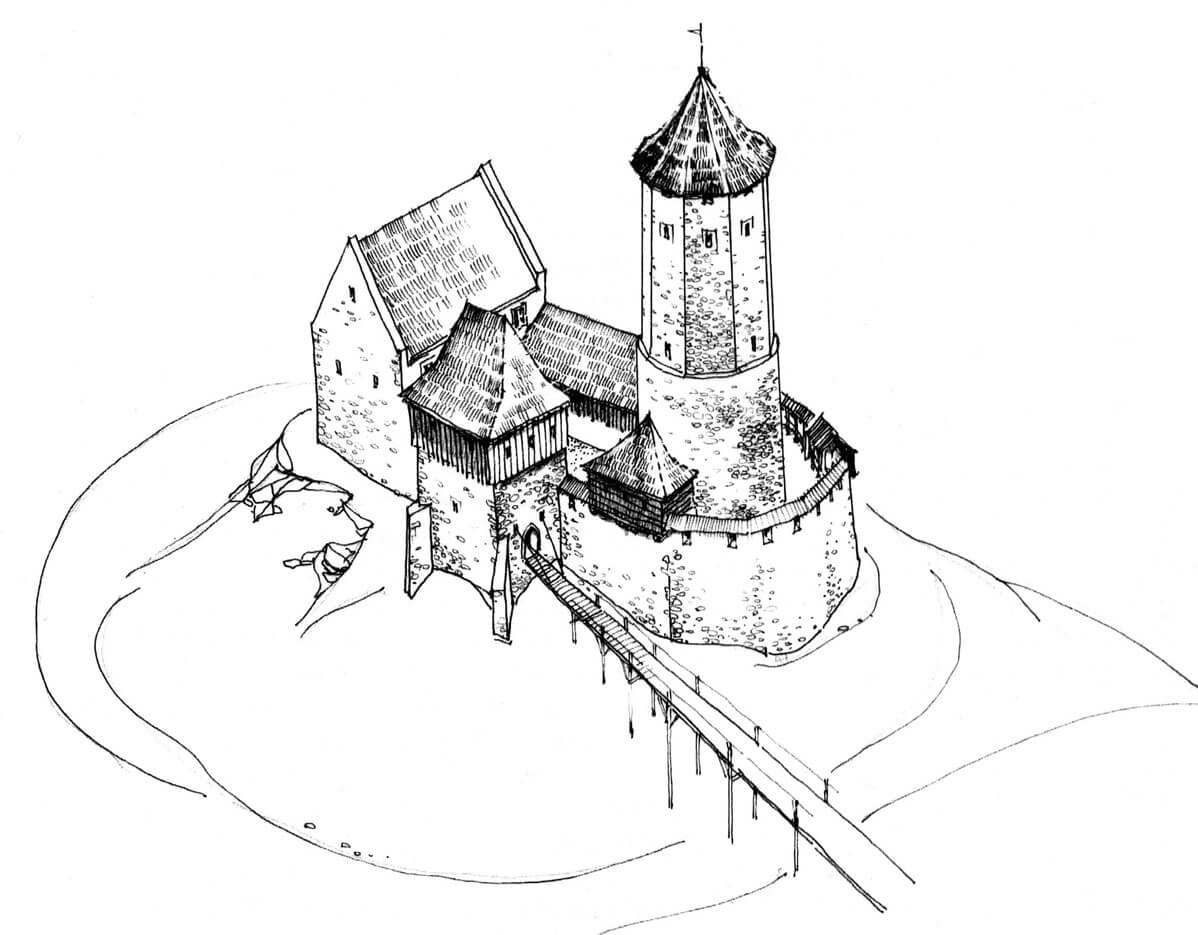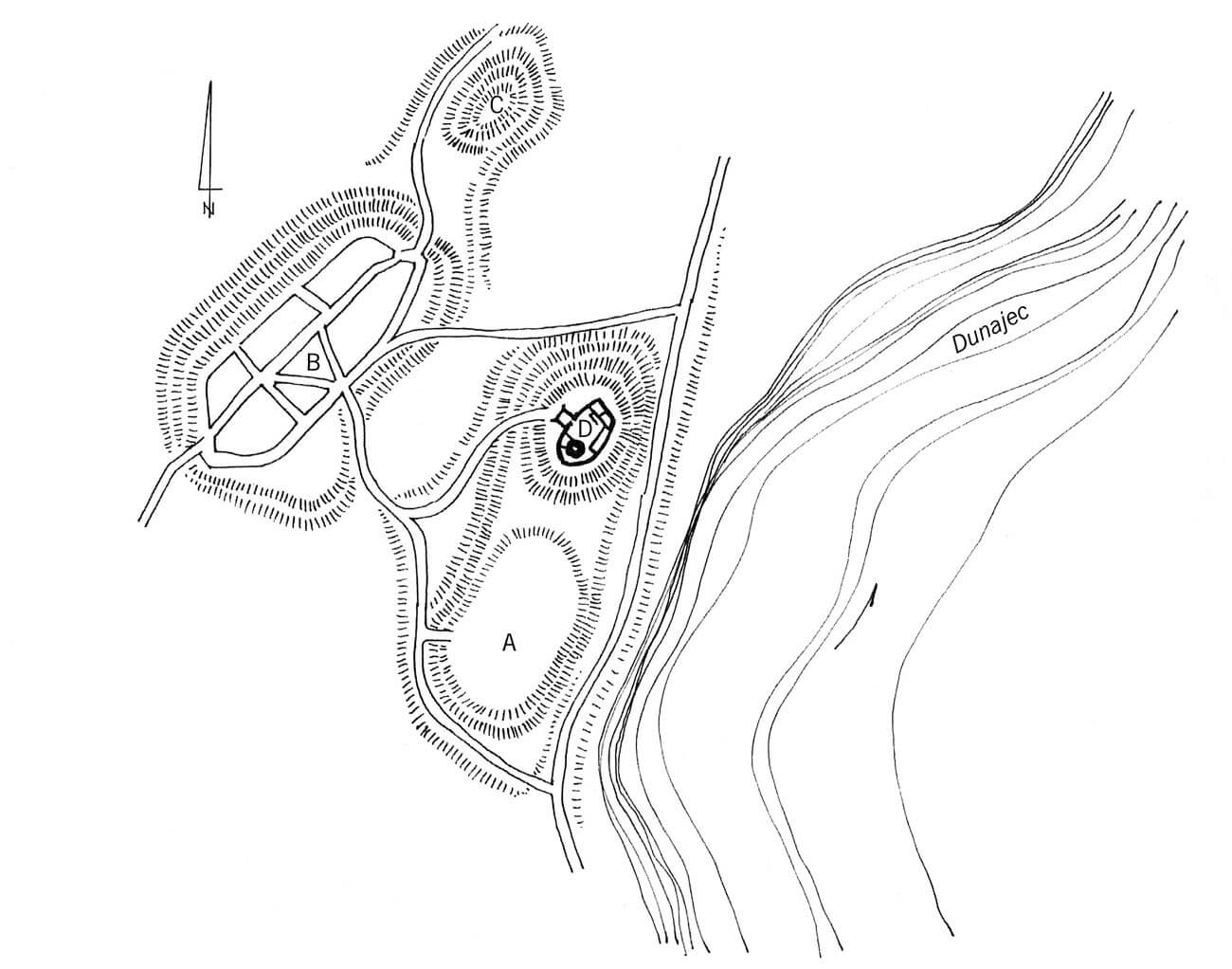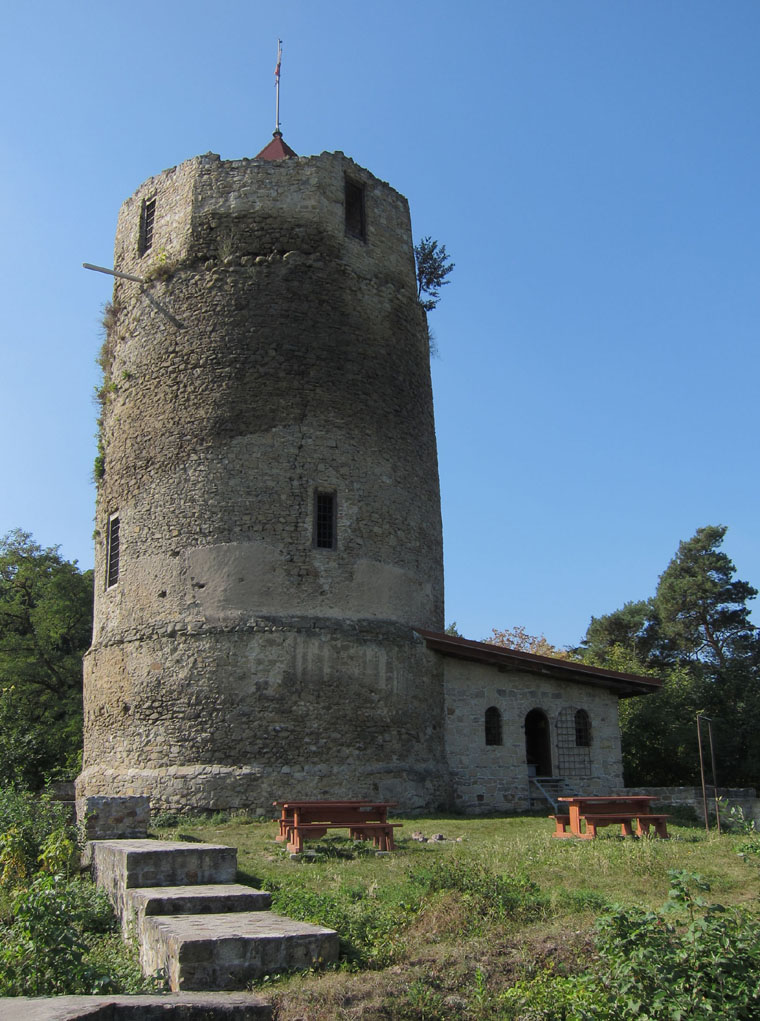History
The castle was erected at the turn of the 13th and 14th centuries, situated above the settlement located between 1288 and 1333 under the Środa privilege, as part of the activities of the Benedictines of Tyniec and due to the privilege of Prince Leszek the Black. The first record of the castle from 1356 mentioned the burgrave of Czchów, Imram. The castle certainly protected the customs house on the Dunajec River, mentioned in written sources since 1327. It was an important trade route for goods imported from Hungary, running south through Nowy Sącz, Poprad and Koszyce, and north through Lipnica Murowana, Bochnia and Kraków. Probably the founder of the town and the castle was King Wenceslaus II, who founded Lipnica Murowana and Wojnicz, and also founded castles in Rytro, Dobczyce, Biecz, Myślenice and Czorsztyn.
During the fourteenth century, the development of the castle and the town was dynamic. During the reign of Casimir the Great, there was an expansion of the stronghold and the construction of a defensive wall or ramparts around the town, as well as a Gothic church in the place of an earlier Romanesque one. In 1328, the seat of the then appointed land court was placed in the castle, and from around 1360, the seat of the Czchów starosty, which existed until the first partition of Poland in 1772.
Until the mid-16th century, Czchów was in its heyday as the administrative seat of the royal estate, although the lease of the castle and the royal town by the Melsztyński family had a negative impact on its development. In addition, the location of the rival Zakliczyn in the place of the former village of Opatkowice caused the collapse of markets and fairs in Czchów. The degradation of the castle buildings began in 1646, when the land court ceased to function there. Then, in the years 1655-1660, the war with Sweden brought destruction. In the 18th century, the building was already in ruin, although royal inspectors were still considering the possibility of its reconstruction. Unfortunately, the starost of Czchów erected a new court building on the town market square, so from that time only the castle tower, in which the prison functioned, was used.
Architecture
The castle was built of sandstone and situated on a lofty hill, sloping in the east towards the Dunajec River, and in the west towards the Czchów settlement. It consisted of a perimeter wall 1.2 to 2.4 meters thick, running along the edges of the hill and forming an irregular polygon. In the southern part of the complex, there was a free-standing, cylindrical tower with two offsets, about 12.5 meters in diameter and over 20 meters high (present state), built on foundations 4.4 to 5.6 meters thick. It was a typical example of a bergfried, or final defense tower. It was the oldest part of the castle, originally surrounded by a wooden palisade. The original entrance to it was at the level of the first floor on the north side, so it could be accessed via a wooden footbridge from the crown of a nearby defensive wall or possibly from a ladder.
The residential building was located at the north-eastern curtain of the castle. It was a house with dimensions of 9.6 x 21 meters, probably two-story, divided into two rooms in the ground floor. From the south, a rectangular entrance lobby with stairs adjoined it, in which a Gothic portal was discovered in the basement.
The gate was located in the north-west part of the complex. Initially, it was in the form of a portal preceded by a neck from the outside, i.e. from the town side. In the 15th century, it was expanded into a gatehouse with dimensions of 6×7 meters, with two buttresses on the west side, and a bridge over the moat was also placed. The latest buildings on the hill, erected at the turn of the 15th and 16th centuries, were a one-story economic building from the eastern side and a western annex called the guardhouse, located between the tower and the perimeter wall.
Current state
The castle tower with a viewpoint and fragments of walls have been preserved to this day. Recently, construction works were carried out at the castle to restore the gatehouse. In the courtyard, a fragment of a medieval pavement measuring 4.5 x 4.3 meters was also displayed, and in front of the gatehouse two wooden footbridges were constructed, referring to medieval bridges. The monument is open in hours: 10.00-17.00, in July and August from 10.00-18.00, in October only on Saturday and Sunday from 10.00 – 16.00.
bibliography:
Krasnowolski B., Leksykon zabytków architektury Małopolski, Warszawa 2013.
Leksykon zamków w Polsce, red. L.Kajzer, Warszawa 2003.
Martyka A., Ruiny zamku w Czchowie – analiza prac konserwatorskich i budowlanych, “Wiadomości konserwatorskie”, nr 64/2020.
Moskal, K. Zamki w dziejach Polski i Słowacji, Nowy Sącz 2004.

